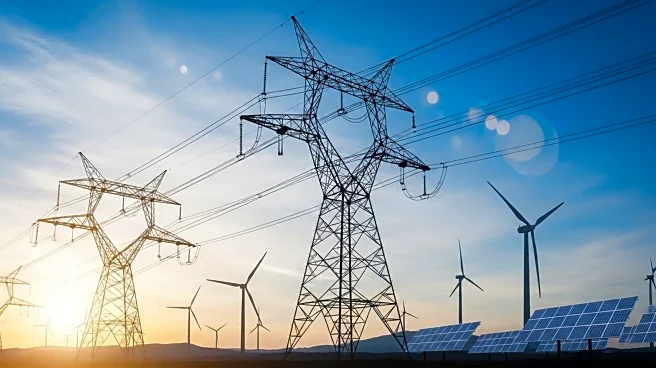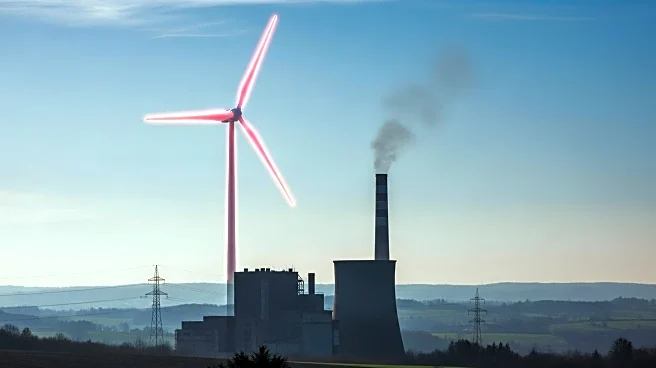What's Happening?
A study by Solar United Neighbors highlights the efficiency of solar energy compared to ethanol in terms of land use. In Indiana, 43% of corn is used for ethanol production, but solar energy is found to be 20 times more efficient. The study argues that solar farms offer a drought-resistant revenue stream and reduce pollution from fertilizer runoff and erosion. Despite concerns about solar farms affecting rural life, the study reveals that only 5% of lost farmland in Indiana was converted to energy production, while 68% was developed into housing. Solar energy can be reverted to agricultural use, unlike permanent housing developments.
Why It's Important?
The findings emphasize the potential of solar energy to provide a sustainable and efficient alternative to ethanol, which is a significant user of agricultural land. The study challenges the narrative that solar farms are detrimental to rural communities, highlighting the greater impact of housing developments on farmland loss. The efficiency of solar energy in land use could lead to more sustainable agricultural practices and energy production, reducing reliance on fossil fuels and promoting environmental conservation.
What's Next?
The study calls for a reevaluation of land use priorities, advocating for increased investment in solar energy infrastructure. As battery storage technology becomes cheaper, solar energy could play a crucial role in stabilizing energy grids during high demand periods. The transition to solar energy could support rural economies by providing alternative revenue streams and preserving farmland.
Beyond the Headlines
The study highlights the hypocrisy in opposition to solar farms, pointing out the greater impact of housing developments on rural character. It suggests that fossil fuel interests may be influencing anti-solar sentiments, underscoring the need for transparent and informed discussions on energy policy.










